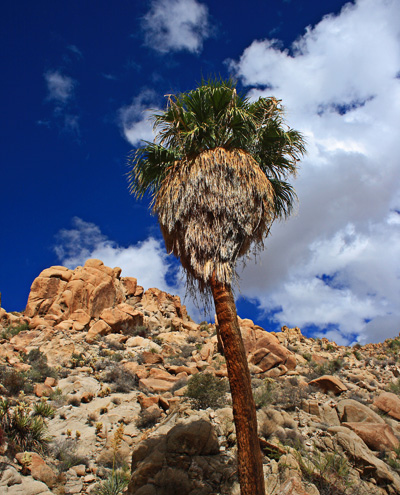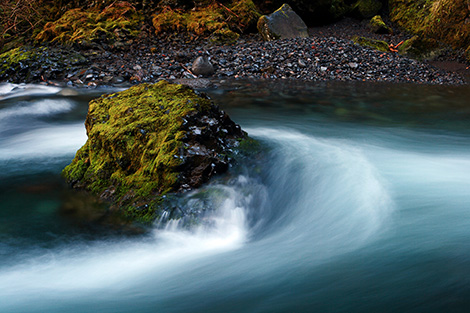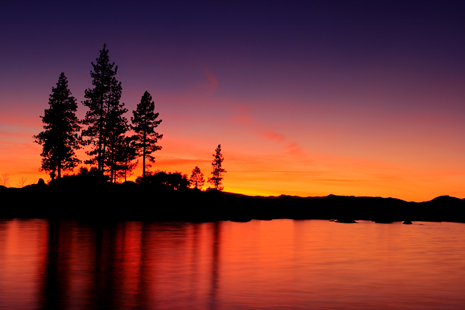5 Things Every Landscape Photographer Should Carry At All Times - PhotoNaturalist |
| 5 Things Every Landscape Photographer Should Carry At All Times Posted: 30 Oct 2012 02:24 PM PDT
Although a lot of these accessories just add unnecessary weight to your backpack, there are at least five things that are extremely useful for a landscape photographer: #1 – TripodOkay, this one’s obvious (or at least it should be!). When photographing landscapes, you’ll want a lot of depth of field, which means a high f-number (usually f/11 or higher), which means longer exposures. And, longer exposures mean more sensitiviy to camera shake. Nothing will keep your camera more still than a tripod. It’s virtually impossible to get sharp landscape photographs without one. #2 – Polarizing filterThere are three great things that a polarzing filter can do for your landscape photos:
Here are a few examples of the polarizing filter in action:  Photo by Steve Berardi In the photo above of a Desert Fan Palm, I used a polarizing filter to deepen the blue color of the desert sky. By the way, the Desert Fan Palm happens to be the only species of palm tree that’s really native to California (most of the ones you see in LA and along the coast were actually brought here by the Australians during the gold rush).  Photo by Steve Berardi The polarizing filter helped eliminate the reflections on the rock in the photo above, taken at the Columbia River Gorge in Oregon. Polarizing filters work best when you’re shooting at a 90 degree angle from the sun, so they won’t do much good for you if you’re shooting directly at the sun or if the sun is directly behind you. And, make sure you turn the ring on the filter until you get the best looking results. #3 – Neutral density filter (2 stop)The neutral density filter simply reduces the amount of light coming into your camera, so it’s helpful when you want to get longer shutter speeds. Here’s an example of a scene where this filter is helpful:  Photo by Steve Berardi The photo above was taken at Lake Tahoe, Nevada. Since the sun had just set, it was still pretty bright out, but I wanted a photo with smooth water, which required a longer shutter speed. To get this longer shutter speed, I had to reduce the amount of light coming into my camera (the job description of the neutral density filter). Some photographers prefer a 1-stop ND filter, but personally I like the 2-stop because I feel like the 1-stop isn’t strong enough. If I only need to stop down one stop, then I’d rather do something else, like use a smaller aperture. #4 – CompassA compass can help you determine where the sun will be at sunrise/sunset, which will tell you if that wonderful golden light will be shining on that ridge or that mountain peak, or whatever you want to capture! To figure out the azimuth of the sunrise/sunset, you can use The Photographer’s Ephemeris. #5 – FlashlightSince that golden light only occurs at sunrise or sunset, you’ll find yourself hiking in the dark very often. Bring a flashlight for safety, so you don’t end up tripping on something! Headlamps work great too. There’s been numerous times where I’ve forgotten a good flashlight and had to hike back in the dark, carefully. One time I just used my cell phone as a flashlight (you might want to checkout that brilliant iPhone flashlight app). Or, better yet, just bring a sleeping bag and tent and spend the night at your photo location! Wake up early for a beautiful sunrise What did I miss?Is there something else you carry that helps you as a landscape photographer? If so, please tell us about it by leaving a comment below. Thanks! Get more great tips in our free weekly newsletter.
Related posts:
|
| You are subscribed to email updates from PhotoNaturalist To stop receiving these emails, you may unsubscribe now. | Email delivery powered by Google |
| Google Inc., 20 West Kinzie, Chicago IL USA 60610 | |





 With all those camera accessories available out there, it’s easy to become a gearhead, and lose sight of what’s really important: making photographs.
With all those camera accessories available out there, it’s easy to become a gearhead, and lose sight of what’s really important: making photographs. 
 About the Author:
About the Author: 










